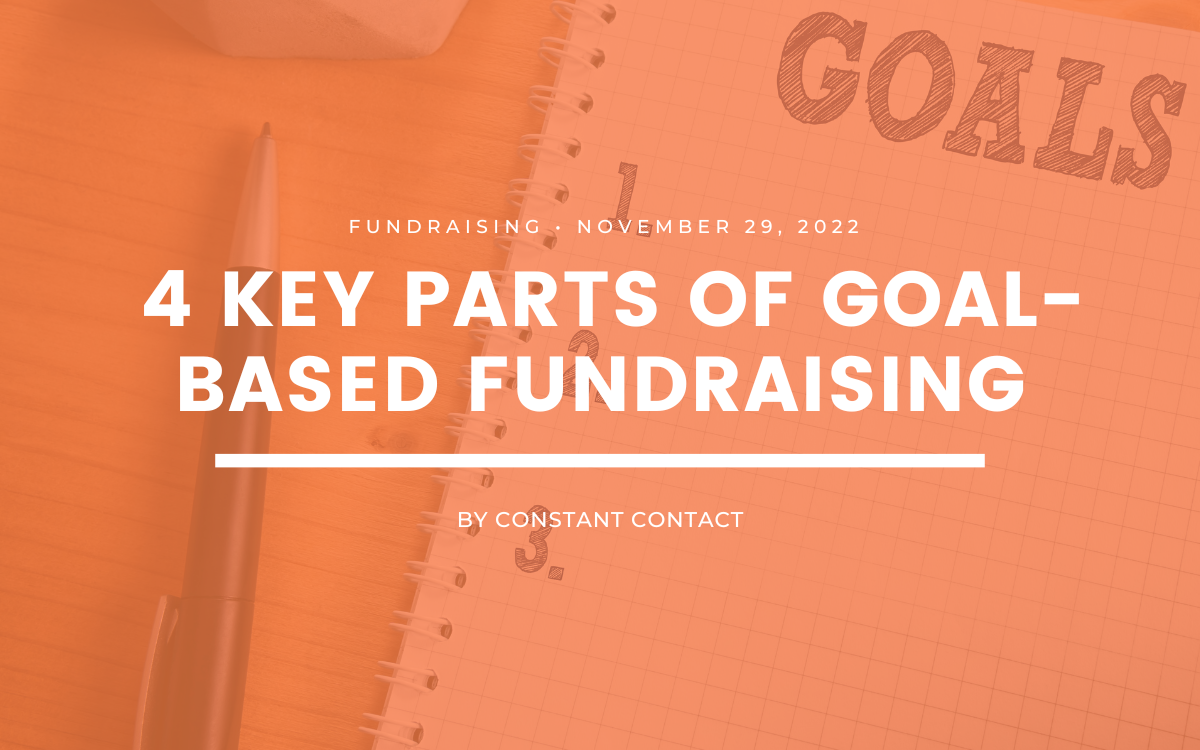Engaging Donors With The Four Key Parts of Goal-Based Fundraising
min to read ✭ 4
When we talk to small businesses about marketing themselves, one of the questions we often ask them to consider is What are your goals? What are you trying to achieve? Knowing what you want to achieve can help you determine who you need to reach in order to succeed, and how you need to do it. One tiny goal can start off a whole avalanche of marketing planning– and at the end of a campaign, measuring against that same goal can tell us whether or not we’ve been successful. So it’s only natural that fundraising should start the same way: with a goal and engaging donors.
Recently, we sat down with Darryl Moser, Business Development Manager with DonorPerfect, and Lydia Messinger, Development Manager with RSVP, to discuss how to create and market a goal-based fundraising campaign that engages donors and gets results. (See the full webinar here.)
Early on in the conversation, Moser shared three common frustrations frequently voiced by donors.
“I feel like my gift did not matter.”
“No one told me how they used my money.”
“The organization didn’t share the impact.”
Obviously, these shortcomings can create disengagement and disenfranchisement among your donors, running the risk that they may not donate again or that the poor experience can harm your reputation with your donors’ networks, as well. But goal-based fundraising (and its components outlined above) can easily put these concerns to rest by employing four key components. (Check out this post for additional inspiration on donor stewardship!)
The Four Key Components of Goal-based Fundraising
Unlike setting a generic marketing goal that only you and your leadership will track, goal-based fundraising sets a goal that is important for your donors, as well. A solid goal-based fundraiser includes (and always clearly communicates) these four things:
- A specific target amount. This is a clearly defined and communicated amount of money that donors are contributing toward and trying to achieve (and can track and watch along the way). This helps donors to understand how much their contribution helps– and how you’re progressing. A progress bar or meter is a great tool to show not only your target amount, but the impact each individual contribution has toward completion.
- A specific purpose. Donors want to know exactly what their money is being used for. Whether it’s a food pantry program, a new piece of playground equipment, upgraded kennels or even new infrastructural components, the more specific you can be, the more your donors can visualize and understand your needs. At the end of your campaign, no one will be left feeling dissatisfied or uninformed, because they will have been looped into your cause before they even put money toward it.
- A specific time frame. While evergreen donations have a time and place for every non-profit, a prescriptive, goal-based campaign needs to have limits and a hard date that donors know you’re charging toward. This can help create responsiveness and overcome indecision in donors who are on the fence, and can also generate enthusiasm and excitement among your donors who are tracking your progress.
- A sense of urgency. Why is this specific project important right now? What are the impacts that your service area will experience if you can’t fulfill the need? Bring your need to life in order to give donors the best understanding of their importance.
Real-life Success With Engaging Donors
Most, if not all, nonprofit organizations were hit hard by the pandemic. With the increased need and decreased resources, these organizations were challenged with raising funds quickly and effectively. At Boyertown Area Multi-Service in Pennsylvania, the impact was significant; their senior center was forced to close, staff and volunteers were limited, and the food pantry experienced three times its normal demand from the surrounding community.
They chose to run a goal-based campaign specifically to fund Preston’s Pantry, a food pantry that services the area. The multi-part campaign included four emails and a number of social posts; in the first email, Boyertown Area Multi-Service clearly stated their need and time frame:
The first email firmly set the amount, the purpose, the urgency, and the time frame. “We need $276,000 to continue serving our community through April and May.”
Over the course of the next several emails, Boyertown Area Multi-Service continued to share the story, mission and need of Preston’s Pantry, painting a clear picture for their donors of what was at stake, why it mattered, and what their contribution could achieve.
In the end, the organization raised more than its target amount, acquired more than 800 new donors, increased food donations by 66%, and exceeded its funding shortfall. By keeping their donors’ information needs in mind and reinforcing the four key components of their goal-based fundraising campaign, Boyertown Area Multi-Service overcame challenging circumstances and ran a successful campaign.
So, what’s next with engaging donors?
No matter what tools you’re using for outreach, from social media and email newsletters to SMS text messaging and special events, augmenting your year-round fundraising with specific goal-based campaigns can help you find success with audiences who might otherwise not engage, and these types of campaigns provide you with amazing content to share with your current donors and the prospects who are waiting in the wings.
To learn more about how DonorPerfect and Boyertown Area Multi-Service created their campaign, segmented their donors for the most impact, and achieved their goals, watch our full webinar here.






One Comment
fun things to do in norfolk, on December 17, 2022 at 10:04 am
Thanks very interesting blog!